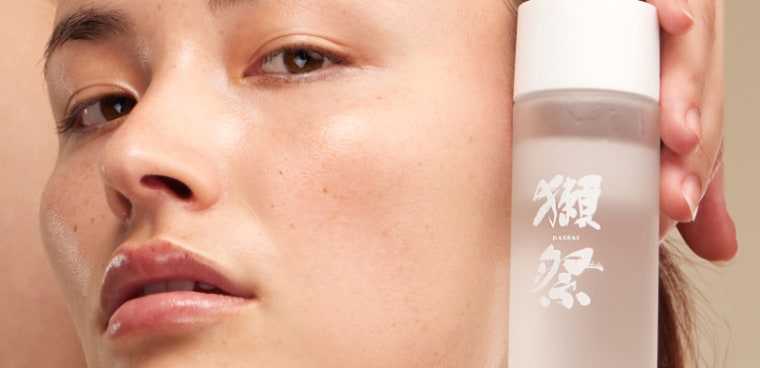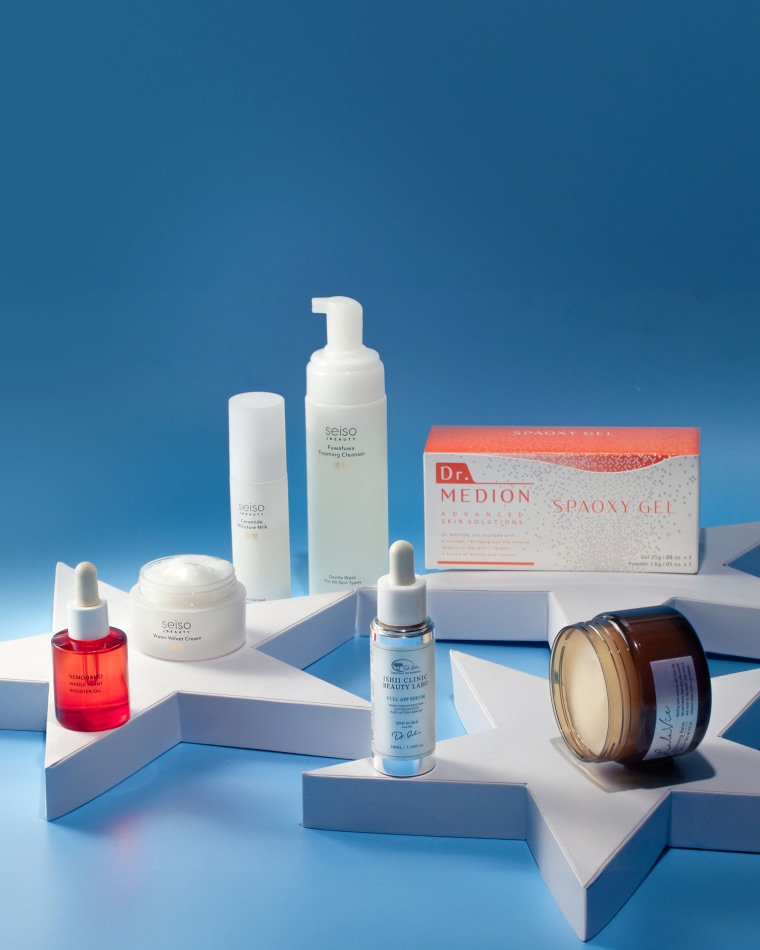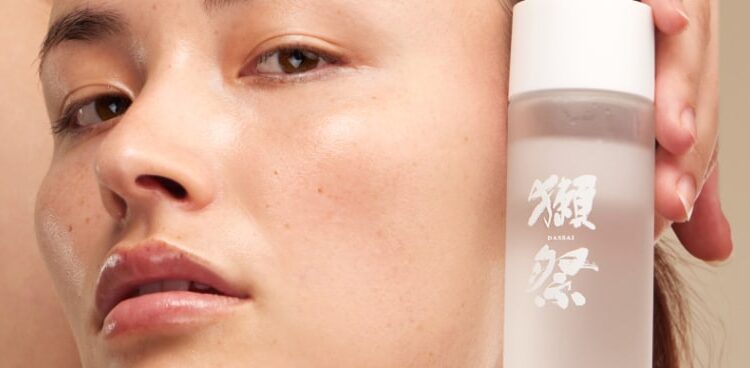Double cleansing, toners, serums, masks, eye creams — and that’s just the half of it. While 10-step skin care regimens have become a mainstay of Korean beauty trends popularized in the U.S., simplified beauty routines from Japan are now also gaining attention, promising clear skin in as few as four steps.
K-beauty’s elaborate routines and fun, effervescent packaging are still wildly popular, but they’ve also paved the way for consumers to seek out Japanese skin care, with its focus on pared-down routines and simpler ingredients.
Japanese beauty uses traditional methods for a hydration-focused four-step routine that begins with cleansing and ends with moisturizer. K-beauty routines typically involve two rounds of cleansing, a sheet mask and exfoliation. Skin care experts told NBC News that J-beauty, as K-beauty’s minimalist counterpart, may be what American consumers are looking for.
K-beauty’s mainstream success in the U.S., from sheet masks to laser facials, has led Americans to associate the country’s beauty exports with innovation and “glass skin.” Key products in Korean skin care routines, like hyaluronic acid and oil-based cleansers, and brands like Laneige and Tonymoly have become staples.
Audrey Depraeter-Montacel, the global beauty lead for consulting firm Accenture, says the popularity of Korean skin care in the U.S. has made way for a Japanese beauty resurgence. “I think Korean and Japanese beauty have always been there,” Depraeter-Montacel told NBC News. “But now with the rise of that in a market like the U.S., I think it puts those brands under the spotlight maybe more than ever, and gives the opportunity of some brands to come back.”

Indeed, Japanese brands like Shiseido have been in the U.S. since 1965, known for their minimalist packaging and formulas rooted in traditional Japanese beauty practices.
Recently, however, more Japanese beauty ventures have cropped up in the U.S. market, from the brick-and-mortar expansion of Tarte’s parent company the Kosé Corp. to the development of the Shikō collective, a digital beauty hub of Japanese brands.
Japanese beauty brands and products have grown in the U.S. in the wake of K-beauty’s popularity and with Japan’s reputation for high-quality products. In its 2023 report, Shiseido identified “strong double-digit growth” in the Americas.
The Shikō collective, a U.S.-based company that sells Japanese beauty products from 13 brands in one online store, has tripled its sales over the past year, according to Midori McGivern, the marketing director of Shikō.
In the competitive American beauty landscape, Depraeter-Montacel says, the diversity of the market, where products target specific concerns from anti-aging to pigmentation, has made room for new brands. The industry is also rapidly growing — health, personal care and beauty is set to be Amazon’s fastest-growing product category in 2024, according to Accenture.
That same diversity of products, however, might be overwhelming consumers. Dr. Hadley King, a New York City-based dermatologist, calls Japanese beauty a “refreshing alternative” for American consumers navigating the growing marketplace of beauty products. “The whole 10- to 15- step regimen was a breakout star, but I feel like people always kind of saw that with cynicism,” she told NBC News.
Skin care experts at the Shikō collective say Japanese beauty offers consumers more simplified, nurturing beauty routines.
Kyoko Getz, Shikō’s in-house aesthetician, says Japanese skin care routines typically involve four steps and focus not on stripping the skin through alcohol-based products but rather on “time-honored and time-proven” methods, like using antioxidants from green tea and fermented ingredients.
“Japanese beauty brands, they focus on honoring your skin, honoring yourself,” Getz said. It’s really big in our culture, you know — honor and respect.”

The simplicity of Japanese products is communicated to customers even in their packaging — where Korean beauty products frequently feature cartoon characters and bright colors, Japanese beauty products are packaged in more minimalistic lettering and colors.
McGivern says this is because Japanese consumers have grown up with more of a familiarity with skin care products, and therefore require less signaling on packages.
“Japanese manufacturers really didn’t have that in mind that package appeal is one of the aspects,” she said. “So we sometimes advise our partners to be more, you know, playful or colorful, because that is an important aspect, particularly in retail in the American market.”
Korean beauty and Japanese beauty, which McGivern calls “cousins,” diverge in their approach to trendy skin care. Where K-beauty is all about finding the next hot thing (most recently, snail mucin), Japanese beauty hearkens back to a traditional past.
Industry experts told NBC News that the Covid pandemic brought about a revolution in interest in skin care routines. King said her clients are more interested in the health of their skin and aware that previously they may have been “doing too much.” “I’ve had patients specifically say to me, ‘Oh, I was using a salicylic acid too much, and so it damaged my skin barrier.’ That would’ve never come out of a person’s mouth like five years ago,” she said.
Nevertheless, experts say K-beauty still reigns supreme in skin care, particularly because of the products’ online appeal. As of 2020, South Korea ranked third in the world, following France and the U.S., in exports of cosmetic products.
A new report by Spate analyzing 60 million TikTok videos indicated that six of the top 10 skin care brands measured by growth in quarterly TikTok views are K-beauty brands.
Indeed, K-beauty has become a skin care mainstay from in-person retailers to social media. While beauty companies have consistently sent social media influencers to Bora Bora and Mexico for “brand trips,” this year, a troop of influencers traveled to South Korea to explore the country’s innovative beauty market.
Influencers returned to the U.S. armed with K-beauty products that they then incorporated into their multistep routines — using products like a four-piece overnight sheet mask that promises “glass skin” in their “Get ready with me” videos.
While consumers seem eager to find more simplified skin care routines, Depraeter-Montacel noted the tension between more “discreet” Japanese brands and the celebrity-focused American market of viral skin care. “That’s a question: Can you be successful as a beauty brand if you are not playing the trendy card?”







